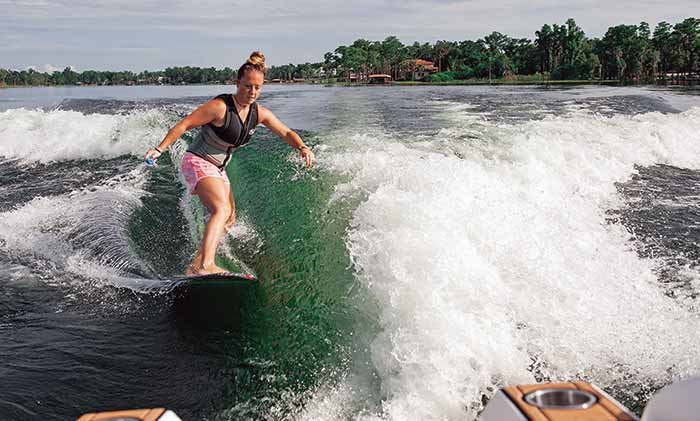
Wakeboat Etiquette
Great article by Charles Fort about a growing concern.
Boats designed to make jumbo waves for riding can cause problems for other boaters and property owners. But there are steps you can take to minimize conflicts.
Wakeboat Etiquette Tips
- Stay at least 150 feet away from structures or shore; ride the core, avoid the shore.
- Minimize repetitive passes.
- Drive a predicted path. In Arizona, boats must travel in a counterclockwise traffic flow.
- Avoid close passes to other boats, and don't follow another boat too closely.
- Don't impede traffic. Wakesurfers usually travel at 10 to 12 mph. Avoid wakesurfing in fairways and busy areas.
- Look before you turn.
- Refrain from tricks when near other boats.
- Early morning times usually have less traffic.
- Keep in mind that local boating laws and navigation rules still apply. Follow them and everyone will enjoy their time on the water we share.
- Keep music at a responsible level; sound travels much farther than you think on the water, and loud music can ruin other boaters' peace and quiet.
In case you haven't seen these boats yet, wakeboats look a lot like ski boats and are designed to make very large wakes to make it possible to "surf" or wakeboard on almost any body of water. While they're typically much slower than, say, ski boats, they make wakes the size of much larger boats, and boatbuilders are constantly refining their products to make larger and better shaped waves using ballast tanks, wedges, and fins. The problem, of course, is that wakes don't just stop after the ride. While they may flatten a little over distance, most of the energy is dissipated when the waves reach shore, and wakeboats can cause large and confused wake patterns for other boaters.
Many municipalities now have regulations on how close wakeboats can be to a structure or shore (usually 100 to 200 feet), but the waves can still do damage even when they're made a long way away. Wakeboats are one of the fastest growing segments of the boating industry and as more of them are on the water and as more craft are wake-averse (small pontoon boats, stand-up paddleboards, sit-on kayaks, and so on) there's bound to be friction between those who want to surf on the lake and those who want to have a peaceful outing.
Better rules enforcement is one answer, though damage or injuries from a specific wake are often hard to prosecute without video evidence. As Massa says, "Smith Mountain Lake has 560 miles of shoreline and it's impossible for law enforcement to be everywhere." Some states such as Missouri have passed new laws that can hold the boat owner responsible for wake damage or injuries if the operator can't be identified. Other municipalities have gone so far as to pass ordinances that prohibit "artificially enhanced wake" on local waterways.